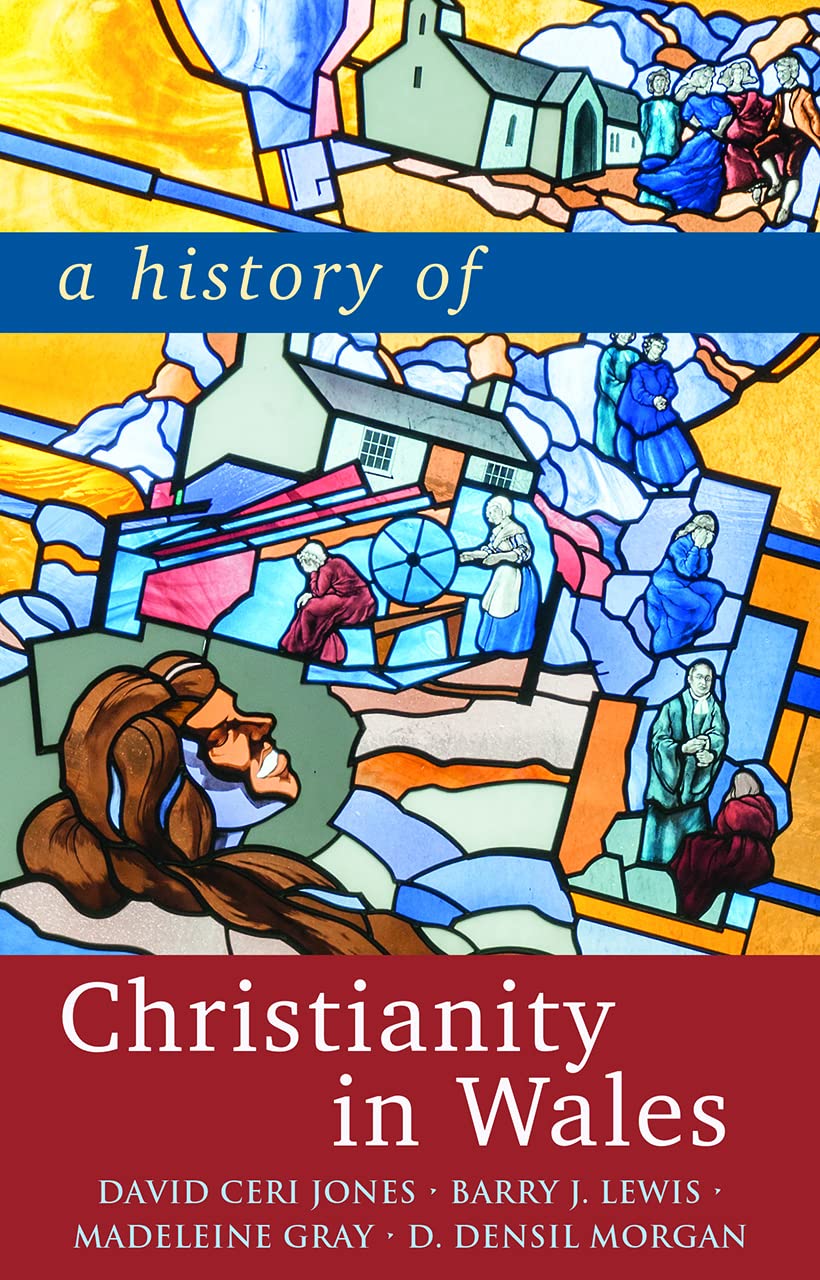In 1800, 15 years Mary Jones walked about 40 kilometers to buy a Bible in his own language. The story of the Welsh weaver’s daughter and her journey to obtain a copy of God’s word in her own language encouraged the creation of the British and Foreign Bible Society, which continues to translate and distribute Bibles throughout the world . Acts of loyalty, no matter how small, can spark global movements,
Christianity in Wales has had a great impact on church history, and not just through a long walk by a scripture-hungry teenager. For the first time in English and in a single volume, A History of Christianity in Wales connects the stories of Wales’ Christian past with readers today. This captivating book is not only for historians, but also for those who want to be encouraged by seeing how God worked in and through the Welsh people.
I had the chance to interview one of the authors about the book. David Ceri Jones, reader in modern history at Aberystwyth University in Wales, has highlighted some of the contours of Welsh Christianity.


A History of Christianity in Wales
David Ceri Jones, Barry Lewis, Madeleine Gray, D. Densil Morgan
A History of Christianity in Wales
David Ceri Jones, Barry Lewis, Madeleine Gray, D. Densil Morgan
University of Wales Press. 384 pages.
Christianity, in its Catholic, Protestant and non-conformist forms, has played a huge role in the history of Wales and in defining and shaping Welsh identity over the last two thousand years. Yet for many people in contemporary Wales, the story of the development of Christianity in their country remains little known. This is the first historical volume of Welsh Christianity from its origins in Roman Britain to the present day.
University of Wales Press. 384 pages.
Many American evangelical Christians are at least aware of the 18th-century Welsh Revival, but this book traces the entire history of Christianity in Wales. Why is it important to examine a nation’s Christian history?
The particular story of the Welsh Christian past is little known beyond the borders of Wales, and sometimes even within contemporary Wales. Many people would be recognize Martyn Lloyd Jones but he might struggle to name another eminent Welsh Christian.
There are many reasons for this, perhaps the main one being that Wales’ history has often been overshadowed by that of its larger neighbour, England. Wales is also a very small country, jutting out into the Irish Sea, with a population of just over 3 million.
It is one of the constituent nations of the United Kingdom of Great Britain and Northern Ireland, and for much of its history most of its citizens spoke a different language to the people of the rest of the British islands.
The history of Christianity in Wales provides a case study that can help Christians understand the cultural currents which enabled the evangelization of much of the country, but which then led to the drastic decline of belief in the Gospel.
What is the connection between Welsh Christianity and the Welsh language? How does this play out in Welsh history and affect the way ministry takes place in the contemporary Welsh Church?
For much of its history the vast majority of Welsh people spoke Welsh and only Welsh.
When the first attempts to teach the Welsh to read took place in the 18th century, the Anglican minister’s “circulating schools” Griffith Jones taught people to read in Welsh. This was not primarily for love of the language, but to enable Jones and other evangelical clergy to reach people more effectively with the Gospel and give them the skills to read the Bible for themselves .
The linguistic composition of Wales changed decisively in the late 19th and early 20th centuries, when the growth of heavy industry, particularly coal mining, led to a large influx of non-native speakers. Welsh in the country. Some argue that the decline of the Welsh language went hand in hand with the decline of non-conformist religions in the 20th century. This might oversimplify the reasons for Christian decline, which of course were not specific to Wales.
Today, according to the latest census figures, just under 18% of Welsh people speak Welsh.
Wales is therefore a bilingual country, and evangelical ministry often reflects this. In some areas of Wales there are fairly recently established Welsh-speaking evangelical churches, while in other parts of the country evangelicals attempt to bring the Gospel sensitively to speakers of both languages.
This can sometimes create tensions, and the linguistic divide can be particularly important and constitute an obstacle to the expression of evangelical unity at the local level. Unfortunately, for the majority of Welsh evangelical Christians today, many of the riches of the Welsh Christian tradition are inaccessible because they are written in Welsh.
The consequence is that a distinctive Welsh spirituality is in danger of being lost, as the influences of the wider evangelical movement exert a greater pull on Welsh evangelical attentions.
What role did Welsh Christians play in literacy in Wales? Why was this effort important to the country’s history? How has Christian publishing contributed to the evangelization of the nation?
The pioneering schools of Griffith Jones, vicar of Llanddowror in Carmarthenshire, made the Welsh one of the most literate people in all of Europe.
A distinctive Welsh spirituality is in danger of being lost, as the influences of the wider evangelical movement exert a greater pull on Welsh evangelical attentions.
Between the 1730s and 1760s, almost 300,000 men, women and children learned to read, mainly in Welsh. And this on a population of barely 450,000 souls.
There was a direct connection between this newly acquired literacy and the receptivity to the preaching of Methodists Howell Harris and Daniel Rowland in 1735 and thereafter. One historian has written that it was only then that the Protestant Reformation came of age in Wales. That may be a bit of an exaggeration, but there is some truth to it.
The translation of the Bible into Welsh had taken place in 1588, and the Welsh had had access to the Scriptures in their own language for almost two centuries by the time of the advent of Methodism. However, Protestantism had only become a truly popular movement in the evangelical revivals brought preaching and singing to the wider culture. A close fusion occurred between popular evangelical faith and the use of the Welsh language to express the exaltation of the new birth experience when the hymns of William Williams Pantycelyn were published.
There was barely a year between 1762 and 1905 when no revival was reported in any part of the country. These revivals produced a religious culture that was both scholarly and populist, and supported a high level of theological discourse through a diverse periodical press and the publication of works of sophisticated Reformed theological insight in the Welsh language. These were awakenings which helped transform Wales into a nation of non-conformists.
Some idea of the richness of this tradition for those who do not read Welsh can be gleaned from D. Densil Morgan’s two-volume history of Welsh theology, Theologia Cambrensis: Protestant religion and theology in Wales.
Who is Daniel Rowland and why is he important in Church history?
Daniel Rowland was one of the triumvirate of Methodist leaders who led the Welsh evangelical revivals of the 18th century. An Anglican minister, his ministry was concentrated in south-west Wales, particularly in his own parish of Llangeitho.
However, our knowledge of Rowland is fragmentary to say the least. Biography of Eifion Evans is the best account of his life, but it has been largely pieced together from sources other than those left by Rowland himself. Beyond a handful of sermons, Rowland’s writings have all been lost.
There was barely a year between 1762 and 1905 when no revival was reported in any part of the country.
Our knowledge of him therefore comes mainly through the writings of his cover colleague, Howell Harris. Harris wrote thousands of letters and kept a very detailed private diary, running to almost 250 volumes (all of which survive in the National Library of Wales in Aberystwyth).
Rowland’s reputation rests on his popularity as a preacher, and he frequently attracted congregations in the tens of thousands to Llangeitho, particularly for open-air communion services. A further surge of revival in 1762, centered on Llangeitho and sparked by a new volume of hymns written by William Williams Pantycelyn, was the impetus for the substantial growth of Methodism. This also contributed to its eventual secession from the Church of England in 1811, although long after Rowland’s death.
But Rowland is just one name among many that feature in this history of Welsh Christianity, many of which deserve to be more widely known.
William Morganthe translator of the Bible, did for the Welsh language what William Tyndale did for English. Harrisa layman, established hundreds of small cells throughout South Wales which proved to be the foundation of the Calvinist Methodist denomination. Thomas-Charles de Bala founded the British and Foreign Bible Society in 1804, while Lewis Edwards He planted Welsh Calvinist Methodism firmly in the soil of Reformed Presbyterianism, particularly of the Scottish variety. All these figures and more feature in this new account of Christianity in Wales.
What do you wish more Christians knew about Christianity in Wales?
Lloyd-Jones once claimed that 18th-century Welsh Calvinist Methodism was first-century Apostolic Christianity. Quite a statement!
If he was right, then the evangelical world has much to learn from the riches of the Welsh Christian tradition. I hope that this volume will introduce evangelical readers to a Christian story hitherto only vaguely known. I hope this will whet readers’ appetites for a more in-depth exploration of the people and events recorded on this whirlwind tour of Wales and its Christian past.


